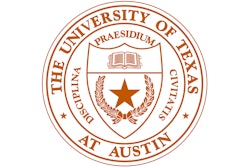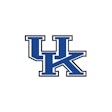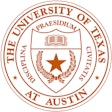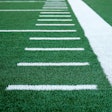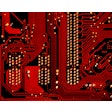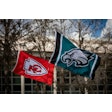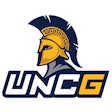Copyright 2018 Times-World, LLC
All Rights Reserved
The Roanoke Times (Virginia)
Virginia Tech's football team physician on Monday shared ground-breaking news with first-year students at Edward Via College of Osteopathic Medicine during his annual concussion lecture.
The Food and Drug Administration this month approved the first blood test to be used in determining whether someone has a brain-injuring concussion. The test looks for two brain proteins that leak into the blood within minutes of a concussive blow to the head.
Dr. Gunnar Brolinson said it will help not only sideline doctors like himself but emergency room physicians everywhere in deciding which patients will need expensive and high-dose radiation CT scans.
What the first-year students might not have picked up on during his lecture is that Brolinson, their medical school, Virginia Tech biomedical engineers and Hokie athletes provided the tests and the test subjects that led to the breakthrough.
Brolinson, who among his many hats is vice provost for research and discipline chair for sports medicine at VCOM, in 2003 teamed up with Tech biomedical engineering professor Stefan Duma to study how well football helmets protect the brain.
Until then, helmets were designed to protect players from skull fractures. Duma set out to measure force of impact on helmets from various types of collisions, such as player-to-player and player-to-ground, and then determine how well each type of helmet protected players' brains from the impact.
Brolinson said they needed seed money to start the project.
"When we wrote grants to try to get funding — we only needed $50,000 to buy the sensors — we got turned down by everybody," he said.
Brolinson said he and Duma then turned to VCOM President Dixie Tooke-Rawlins.
"We said, 'We have this really cool idea, but no one wants to fund it. Will you give us some pilot money?' And she said, 'Yes,'" Brolinson said. "The interesting thing is I actually talked with one of the folks on the phone [who turned them down], and he said, 'Dr. Brolinson, this is a junk diagnosis. This is junk science, and this will never be funded.'"
With the money from VCOM, the project was a go. The system of football helmet ratings that came from it has revolutionized the industry. At Virginia Tech alone, the number of concussions has been cut in half, Brolinson said. Duma's lab continues to study helmets for other sports and is continuing to set standards.
But it wasn't just helmet makers, the NFL, the NCAA and youth football leagues who responded to the initial research. Brolinson said researchers studying concussions also took notice.
"People began to say, it sure would be nice to have a blood test. It's been the holy grail of the brain," Brolinson said.
For all other organs, diagnostic tests exist to look for and measure certain enzymes that signal injury or disease. But it had been thought that nothing could cross the blood-brain barrier.
Banyan Biomarkers, with facilities in Florida and California, had U.S. Department of Defense funding to disprove that and was looking at biomarkers that would help diagnose head trauma in soldiers.
Banyan had identified a couple of proteins but needed help figuring out whether they signaled a concussion.
Science requires control groups to advance, and Brolinson said Banyan came to Tech for help with that.
They decided to work with three cohorts of Hokies: athletes who were diagnosed with concussions, football players who took hits but were not concussed, and baseball players who have strenuous workouts but rarely sustain concussions.
The Tech team sent the blood samples to Banyan. The results then led to a multi-site international study in which emergency room physicians tested for the proteins.
"If a child falls off a bike and the parents aren't sure about head trauma, but he has a headache, a CT scan in the first 24 to 48 hours is usually a given," he said.
CT scans can, but don't always, show brain tissue damage or lesions that may require treatment. They can be expensive and they give off high doses of radiation.
During the trial, patients still were given scans. When comparing the blood results and the scans, the blood test proved highly reliable in determining in which patients the scans would show brain injuries.
"The cool thing is if it's negative you don't have the CT," Brolinson said. He said the process is similar to one used when a patient comes in with chest pain. Blood is drawn to look for certain enzymes to help determine if the patient is having a heart attack or indigestion.
With the concussion test, the two proteins show up immediately after trauma, but the test requires a lab and about three hours to complete.
"Now that the FDA has approved it, there are companies working hard to do this with a finger stick," he said. As a sports medicine doctor, Brolinson said he's looking forward to the day when he'll be able to get a drop of an athlete's blood and run it through a scanner and phone app.
The science on concussions is still in its infancy, Brolinson told the students. There is much yet to discover, and VCOM has a chair at the table.
The researchers, who were once told they were pursuing junk science, have since received millions of dollars in funding, he said. They've taken part in large National Institutes of Health studies and are playing a significant role in a multi-year NCAA and Department of Defense study that is looking for additional biomarkers in the brain and for a genetic component that helps explain why some people are susceptible to multiple brain-damaging concussions.
Brolinson said it's tremendously exciting to have been part of the development of the blood test.
During his lecture, Brolinson showed clips of a couple of football plays. In one, he said, everyone in the stands could diagnose a concussion when a player's head smacked the ground and he was not moving.
He's more concerned about the less obvious injuries that occur when players collide but initially appear unscathed. Tech, with its helmet sensors, is able to pick up on the force of impact on plays.
Ultimately, though, Brolinson said, athletes represent just a very small percentage of concussions.
The Centers for Disease Control and Prevention reports that in 2013, about 2.8 million people were treated for traumatic brain injuries in emergency departments.
The blood test will help identify which patients have swelling or bleeding.
"I'm a sports medicine doctor, but the utility of the test in the emergency room makes it more important than on the football field or hockey rink," he said.
Read More of Today's AB Headlines
Subscribe to Our Daily E-Newsletter
Terms and Conditions Privacy Policy



















